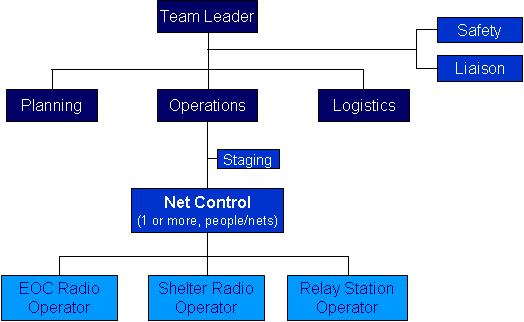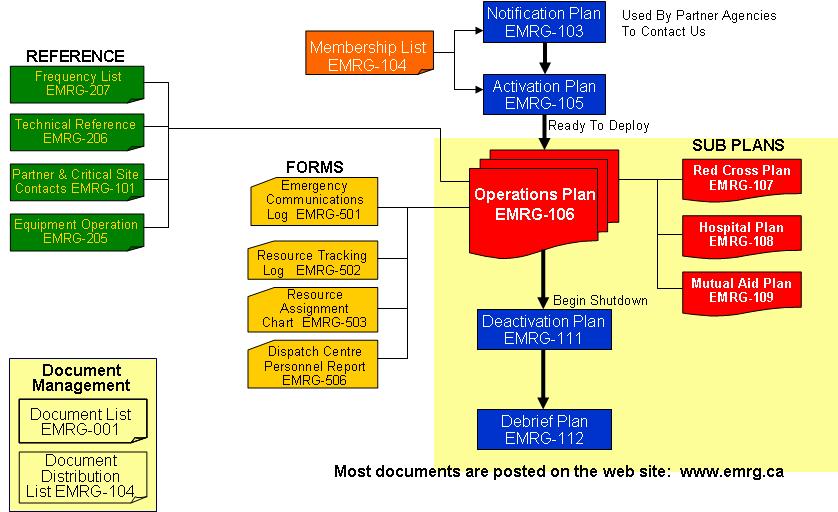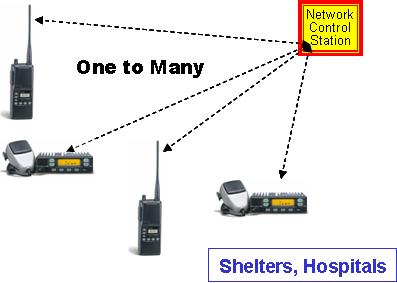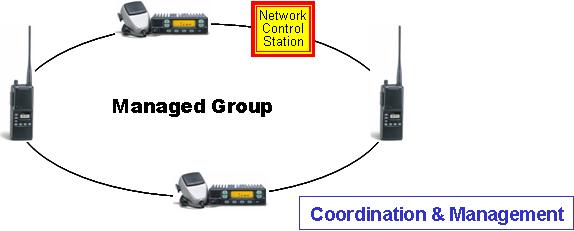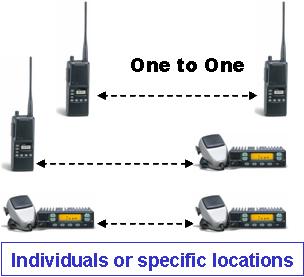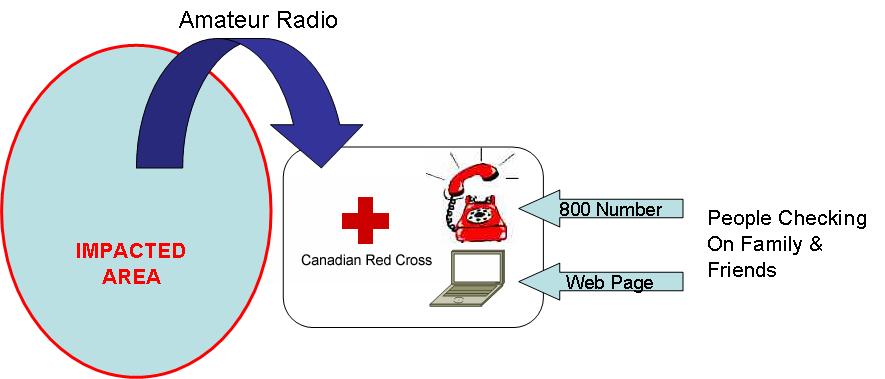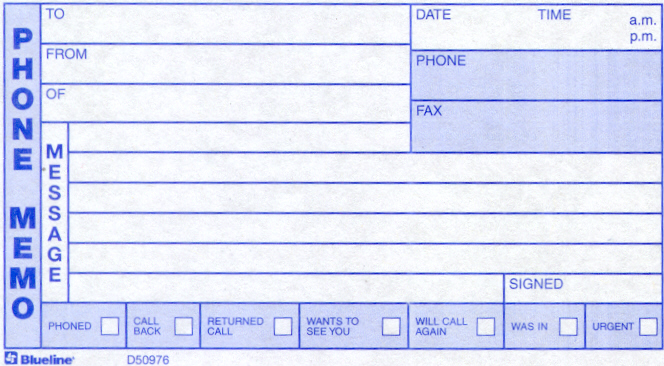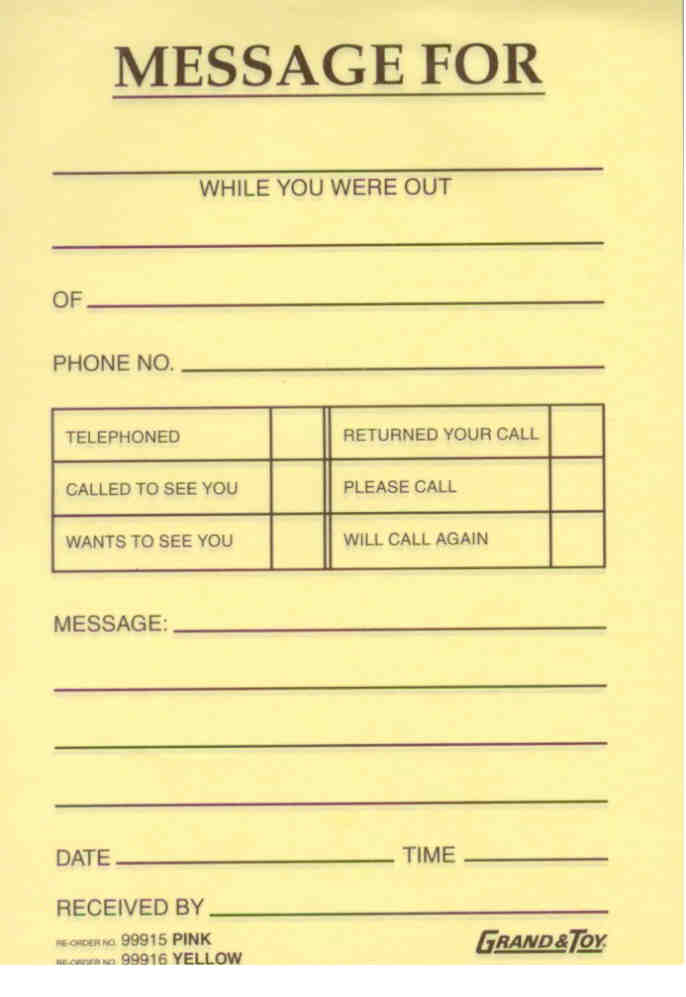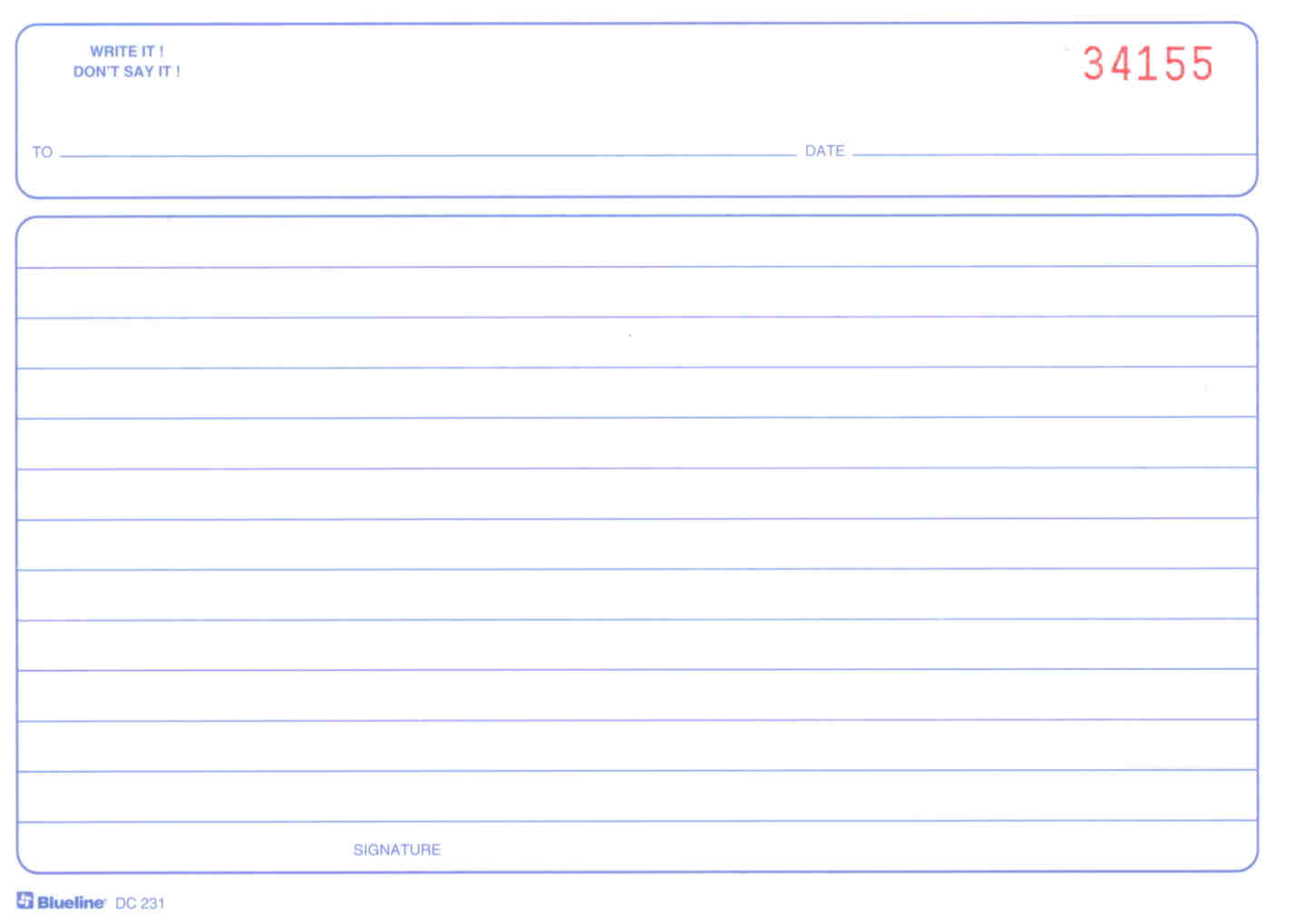On This Page
Go Kits - What To Pack
EMRG Deployment Organizational Structure
EMRG Deployment Documents
EMRG Emphasis On Local Communications
Single Radio Link - Shortest Radio Path
Communications Solutions
EMRG Triband + 1 Strategy
No Command Vehicle
Home Stations In An Emergency
Safety
Family Status Requests
EMO (Emergency Management Ontario)
Communications At The City EOC
Message Forms
Additional Information
EMRG Operations Plans
EMRG Forms
Exercises and Activations
IMS - Incident Management System
Technical Reference Document
Planning
Introduction
The Operations page is a collection of information related to how EMRG would deploy, the solutions used and the services provided. The Additional Information links on the left side of the page provide supporting information and documentation such as forms and operations plans. Good Operations plans start with good planning, personally and as a group.
GO Kit - What To Pack for a Deployment
There are different names, "Go Kit", "Fly Away Kit", and "Deployment Kit" for example, but they are all referring to equipment and supplies that are pre-packed for deployment in an emergency. Preparing a kit in advance has several advantages, including not having to think about what to pack when you are trying to rush out the door, having time to go to the store and get what you need before you need it and being able to deploy quickly because you just need to grab you pre-packed kit.
There are three important things to remember about go kits:
- It is never too late to start a go kit
- You can start with a very basic kit
- You will never finish building your go kit
For more information, go to the EMRG Go Kit page.
EMRG Deployment Organisational Structure
The EMRG organizational structure for deployments is different than the normal group structure. The key difference is that in the deployment model (used when EMRG is deployed by a client), there are no names associated with the roles until there is a deployment, then roles are assigned based on who is available. Roles can be added or removed based on the size of the incident. In a small incident, one person may take care of Planning, Operations and Logistics, while in a large incident these functions may have someone dedicated to each function. Similarly, there may not always be a Safety, Liaison and Staging.
The EMRG Deployment Model is based on IMS (Incident Management System). EMRG is a communications module that plugs into other organizations IMS structure. The EMRG Team Leader is not an Incident Commander. The Incident Management System (IMS) is an operational framework for emergency response. The system facilitates communication, response activities and cooperation within and between organizations; as well as allows for incidents to be managed in a cohesive manner.
- TEAM LEADER - The Team Leader is ultimately responsible for EMRG service delivery during an emergency - disaster. As shifts change during an incident, the person acting as the team leader will also change. The Team Leader may or may not be the person who is the Team Leader on a daily basis.
- OPERATIONS - The Operations Manager is responsible for the real time delivery of EMRG services. Typically located at Net Control, the Operations Manager is the person who makes decisions about the current delivery of services. This could include the decision to move some functions to another repeater, changing repeaters, or adding a cross band repeater.
- PLANNING - The Planning Manager is responsible for the ongoing delivery of EMRG services. This would include things like planning future shifts, expansion or contraction of EMRG services over time.
- LOGISTICS - The Logistics Manager is responsible to ensure the timely delivery of resources during the incident. This may be people or equipment required to deliver EMRG services.
- SAFETY - The Safety is responsible for the overall safety of EMRG members when deployed for an incident. Typically the person assigned as Safety would do inspections of any operating sites to ensure that there are no dangers to EMRG members operating at the location, or to other people. This could include requesting longer extension cords, so they are run out of the way, removal of a battery that has no inline fuses, or removal of EMRG operators from a location that is not safe. LIASION - The Liaison is responsible for interfacing with other ARES or non ARES groups who are providing support to EMRG during an incident.
- NET CONTROL - The Net Control Station(s) is the dispatcher of the Amateur world, and acts as the coordinator on the Amateur frequencies during an incident. There may be more than one person per NCS (Net Control Station) and there may be more than one NCS operating at a time.
- STAGING - Staging is a coordination function established when there are incoming volunteers for assisting EMRG. In order to manage these incoming resources, a staging area would be set up where people can register and receive their assignments.
- RADIO OPERATOR - There are various radio operator positions required for an incident. The Radio Operator may be more than one person, depending on requirements.
Deployment Documents
The Document chart below shows how EMRG documents tie into the deployment plan, starting with EMRG-103, the notification Plan. Other documents such as Reference, Forms and Sub Plans also support the main deployment plan structure.
Notification Plan includes:
- How partner organizations contact EMRG
- Organizations Supported
- Response Priority
- Identification of EMRG Members
Activation Plan includes:
- Contact by Partner Agency
- Initial Roles and Responsibilities
- Team Leader
- Resource Manager
- Temporary Net Control Operator
- Net Control Operator at Randall
- Partner EOC Operator
- Callout Captain
Operation Plan includes:
- Setup/Start activities of individual members
- Pre-deployment
- Deployment
- On Location activities
- Messages and logging
- Away from radio
- Shift Change
- Shut-Down activities
- Logs, equipment, communication
De-Activation Plan includes:
- Sequence of events in the shut down after an activation
- Responsibilities of
- Team Leader
- Operations Manager
- Resource Manager
- Phone Captains
- Plan for De-Brief
EMRG-112 De-Brief Plan
Under construction
Purpose is to review the events of the activation and to ensure that any "lessons learned" are incorporated into EMRG planning
De-Brief plan will contain:
- Who should attend
- Debrief purposes
- Time frame for first and 2nd debrief
- What happens to information gathered at debrief sessions, and who processes this information
EMRG Strategy and Solutions
Emphasis on Local Communications
EMRG strategy must prioritize activities based on volunteer availability, funding, equipment and probability of being required. EMRG emphasis is on local communications because;
- It is the most likely to be required.
- It will generate the most traffic.
- Sending and receiving messages outside the City of Ottawa requires a local communications infrastructure to collect and deliver the message from the local source.
- There are plenty of HF (long distance) stations in Ottawa that can be used to relay messages if required.
Using Single Radio Link - Shortest Radio Path Possible
When sending messages to locations that are not within the local area, EMRG will use a single radio link (hop) when possible, with the shortest path possible. Radio will be used to communicate with the nearest location that has working phone and Internet access, so messages are relayed only once. For example, if phone service is working in a neighbouring City and the local repeater there can be reached on VHF, then EMRG would use local Amateurs in that town to relay messages by phone or Internet, rather than using HF to send the message through multiple nets. With cheap long distance and Internet access, there is no reason to send messages over long distance using radio.
Communications Solutions
EMRG may provide more than one solution for an incident. The main communications network would typically be on VHF, covering a wide area of the City, linking shelters, the Red Cross, the Community Services Command Centre, the City Emergency Operations Centre and any other sites as required. This is the One to Many radio dispatch type functionality that allows everyone to hear all messages, making it quick and efficient to send out, or collect information from multiple sites.
There may also be communications solutions required for management of an incident. For example, the Red Cross, The City EOC and the Community Services Command Centre may need to communicate with each other, to exchange planning information and to make management decisions during an incident. This would be a much smaller, less structured communications net and would typically operate on UHF.
Depending on the incident, there may also be a requirement for special communications solutions, providing one to one communications. From fixed sites like the Red Cross, EOC and the EMRG communications room, 220 MHz simplex would typically be used.
Tri-Band + 1 Strategy
EMRG strategy for key sites such as the EOC, Ottawa Red Cross and the EMRG Comms Room, is to equip each site with 3 single band radios (144, 220 and 440 MHz), connected to a tri-band antenna, plus 1 single band 144 MHz radio on another antenna. All radios would be wired with the EMRG Standard Radio Interface (SRI), so any radio can be used for Voice or Data communications.
The use of three bands (144/220/440) allows more than one radio operator in a location, while avoiding the challenges of de-sense when using multiple radios on the same band.
NO AMATEUR COMMAND VEHICLE
EMRG does not have, and does not desire to have, a trailer or vehicle equipped with Amateur radio equipment to act as a portable Amateur radio command centre or communications vehicle. The two main reasons for not having a vehicle or trailer;
- There is no requirement for a stand alone Amateur radio communications/command vehicle.
- By developing portable solutions, they can be used anywhere in the City or transported for Mutual Aid in neighbouring Municipalities, or sent across the country to help out if needed.
Some of the reasons why there is no requirement for building such a vehicle or trailer include;
- The EMRG goal is to co-locate the radio communications with the client being supported. In most cases, this will be inside a building of some type, not out in the parking lot.
- If the client is requesting communications in a location with no shelter, then EMRG would request the client to provide some type of shelter if required. For example, if the City decided they needed Amateur radio at a location with no shelter, then they could provide a City van or an OC Transpo bus from which EMRG could operate.
- EMRG does not see a need to operate long range HF from a forward location. This is best done using a relay station in a more secure, stable location, linked using the local VHF/UHF network. Therefore the only equipment required for operation from a temporary location is a VHF/UHF mobile, and perhaps a portable or cross-band repeater. These can easily be set up in a car or van, allowing local communications on hand held radios.
Operational Considerations
Home Stations in an Emergency
Home stations are of limited value for emergency communications. Amateurs are required to leave home to operate in one of the many sites that need communications.
In an emergency there may be a requirement for net control or an HF relay station from a home, but one or two would be required. Even mobiles (radios in vehicles) have limited value in an emergency, except during transportation to a location, or in situations where a mobile station is required, such as a citizen patrol or door to door health and safety checks.
Safety
We need to think about and practice personal and public safety, when we provide emergency communications.
- PHYSICAL SAFETY: Could something fall down, could someone trip on a cable?
- ELECTRICAL SAFETY: Is everything fused properly, are power cords in good condition and the correct size for the job? Burning insulation on the wire to the battery because there is no fuse can frighten people in a shelter who may have already lost homes and loved ones.
- RF SAFETY: Use the proper antenna and power level for the situation. Limiting electromagnetic radiation is an important consideration. Running 50 watts into a mag mount antenna on a filing cabinet, is not an acceptable practice.
Family Status Requests
EMRG works to be part of the integrated emergency response family. All requests for information about family or friends must go through the official organization that is responsible for tracking this information, which in Ottawa is the Red Cross. Depending on the situation, the Red Cross will use "1-800" numbers and web sites to track incoming requests and provide information about people in the impacted area. If Amateur radio is involved, it will be to support the Red Cross in the impacted area and to relay information from the impacted area to the Red Cross. Amateurs should not use Amateur radio directly into an impacted area to provide health and welfare checks for family and friends. The drawing below shows the proper use of Amateur radio.
When Amateurs make contact directly into an impacted area, there are 3 important issues;
- The request for information may be repeated if there are other friends or family in another area making the same request, wasting time and air time.
- Amateurs may not have the skills to properly evaluate an individual’s condition in the impacted area and provide the support required.
- The request is not recorded, so there is no one providing follow up checks.
EMO - Emergency Management Ontario
In the event that the Cit of Ottawa and EMO were not able to communicate due to some sort of network problem, EMRG will provide communications if requested. This may be using the shortest path, such as VHF into the nearest location with a working telephone, or if required, HF using a home station to relay between VHF and HF.
EMO ARES has a policy of collecting situation reports in parallel with the normal City – EMO communications. EMRG will not supply situation reports and advises EMRG members not to do so, since Amateurs do not have information on the full picture of what is happening in the City. It is the City of Ottawa’s responsibility, to collect, filter, analyze and validate local information, in order to provide concise and accurate information in a situation report.
Communications at the City of Ottawa EOC
The EOC (Emergency Operations Centre), located at City Hall, is a decision making centre and uses communications (phone, fax, radio) to get questions and information in and to send information back out. Police, Fire and Ambulance maintain their respective dispatch communications locations outside the EOC, but place a representative in the EOC for information that needs to go to the EOC. EMRG radio operations functions in the same way. The Amateur radio Net Control Station (NCS) function is like a dispatch and is not part of the EOC communications. The EMRG communications room is located at Ottawa Fire Dispatch
One of the lessons learned from the Ice Storm in 1998 was that to be effective, the NCS function should be separate from EOC communications. This could be a room off the EOC, a room elsewhere in the same building or even a location in a different building. Trying to pack everything in the EOC has several negative aspects;
- Communications capability may be compromised due to the location of the EOC and the high amount of radios in the area.
- There is typically no room for operations and planning, making it difficult to manage resources.
- Security is usually high, making it more difficult to change shifts.
- Most of the traffic is not destined to the EOC. Radio traffic will include communications from shelters to the Red Cross base, information to or from outside areas, distribution of materials to shelters or citizen patrols for example.
- It may turn out that in some situations, the EOC is the only location or the best location to include the Amateur NCS function. However it is important to understand that this is a separate function from EOC radio operations.
MESSAGE FORMS
EMRG does not plan on using any type of message form, either from the City of Ottawa, or the RAC Radiogram. The traditional military model of a radio operator as a dedicated human-radio interface, a sort of human fax machine, responsible only to take in official messages, in official format, signed by an officer, does not work in a civilian emergency/disaster response. The military model works in the military because all participants are trained at their job, to understand and apply the model.
In a disaster response, most of the support roles will be performed by staff who have other jobs normally, or by volunteers such as Red Cross or Salvation Army. Messages will be tactical, usually short, making requests for more water, blankets, an ambulance or replying to a request for information. There will not be any official message forms and the people will not be familiar with the ARRL/RAC amateur message forms.
Logging incoming and outgoing radio traffic with a time stamp is key to keeping a record of the information. EMRG Log Sheet
Another option for incoming or outgoing messages, where a duplicate is required and lots of writing space, is an Inter Office Memo pad. These are available with a printed sequential number as well.
